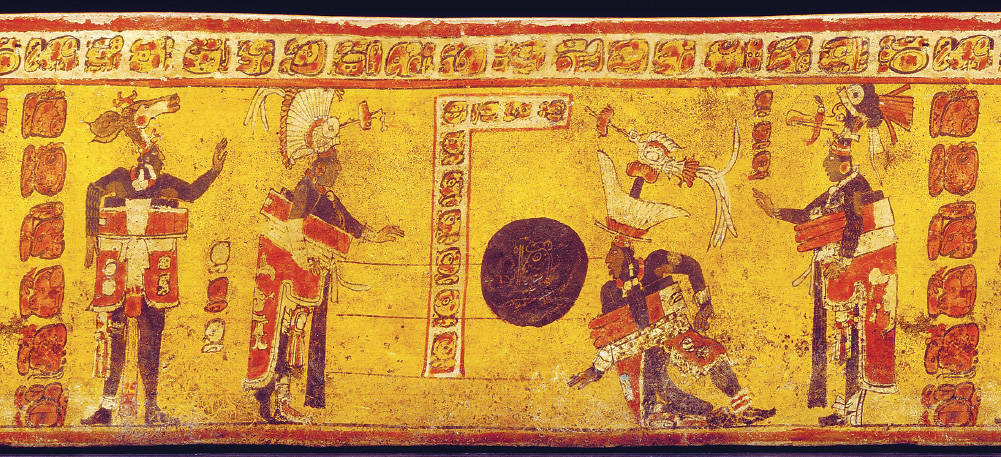Visual Source 6.4
The Ball Game
Among the most well-known and intriguing features of Maya life was a ball game in which teams of players, often two on a side, sought to control a rubber ball, using only their thighs, torsos, and upper arms to make it hit a marker or ring. Deeply rooted in Maya mythology, the game had long been popular throughout the Maya territory and elsewhere in Mesoamerica. On one level, it was sport, often played simply for entertainment and recreation. But the game also reflected and symbolized the prevalence of warfare among Maya cities. As one recent account put it: “The game re-enacted the paradigms for war and sacrifice, where the skillful and blessed triumph and the weak and undeserving are vanquished.”32 The ball game was yet another occasion for the shedding of blood, as losing players, often war captives, were killed, sometimes bound in ball-like fashion and rolled down the steps of the court to their death. Thus the larger mythic context of the ball game was the eternal struggle of life and death, so central to Maya religious thinking.
Visual Source 6.4, a rollout of a vase dating from the seventh or eighth century C.E., depicts the ball game in action. The two players on each side echo the Hero Twins of Maya mythology, famous ball players who triumphed over the lords of the underworld in an extended game and who were later transformed triumphantly into the sun and moon. The glyphs accompanying this image named two kings of adjacent cities, suggesting that the game may have been played on occasion as a substitute for warfare between rival cities.

Question
What might the elaborate dress of the players suggest about the function of the game and the status of its players?
Question
Notice the deer headdress on the player at the far left and the vulture image on the corresponding player at the far right. What do the headdresses suggest about the larger mythic context in which the game was understood?
Question
Notice the heavy protective padding around the waist as well as the wrappings around one knee, foot, and upper arm of the two lead players. What was the purpose of such padding? Keep in mind that the rubber ball, shown here in an exaggerated form, was roughly the size of a modern volleyball but weighed perhaps seven or eight pounds.
Question
How might you compare this ancient Maya ball game to contemporary athletic contests? Consider the larger social meaning of the game as well as its more obvious features.